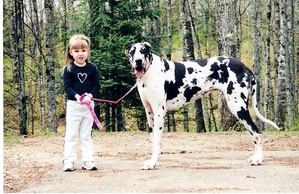Canine coat color and traits are determined by the interaction of multiple genes, each responsible for a specific inherited trait or characteristic. The development of genetic testing for these traits has resulted in a significant paradigm shift from historical breeding practices for the dog breeding community. With a few exceptions for colors or patterns that cannot yet be tested for, genetic coat color testing has eliminated the need to perform test breedings or to make assumptions when it comes to determining what coat colors and traits might be produced by a specific breeding pair.
Genetic Coat Color Testing Basics
Despite its power, the use of genetic testing does not eliminate the artistry of dog breeding or the advantages that come from experience. Instead, genetic testing assists in eliminating some of the challenges that biology presents. Regardless of a breeder’s experience level, colors or traits that are inherited in a recessive fashion can present significant challenges when it comes to predicting potential coat color breeding outcomes. Recessive traits are those that require a dog to inherit two copies of the associated genetic variant (one from each parent) in order to display that trait. The challenge with recessive traits is that dogs ...



